#archduke franz karl of austria
Text

Widowed for two years, after his first wife Margarete of Saxony gave him no children, [archduke] Karl Ludwig had married in 1862 this princess [Maria Annunziata] of the branch of the Bourbons of Naples, who gave him three sons: the archdukes Franz Ferdinand, Otto and Ferdinand Karl [and also a daughter, archduchess Margarete]. However it soon became apparent that the young woman was suffering from tuberculosis, her frequent fits of coughing, her pale complexion being signs of the disease. Her condition aggravated at the beginning of 1871. [Archduchess] Sophie is worried: “If she took an inflammation of the lungs, she would succumb to it”, she fears at the beginning of January. By May 1, the situation became alarming: Maria Annunziata “was wasting away fast. She’s an skeleton”. Informed the next day that “Annunziata is worse and asked to be administered”, Sophie goes to see her immediately. She attends on her knees to the administration of the extreme unction. After which, the dying woman wishes to be alone with her parents-in-law. She asks them to watch over her husband and children. By way of farewell, [archduke] Franz Karl makes the sign of the cross on her forehead, mouth and chest. Two days later, the poor young woman gave back her soul to God.
Bled, Jean-Paul (2018). Sophie de Habsbourg
ON THIS DAY, IN 1871, ARCHDUCHESS MARIA ANNUNZIATA OF AUSTRIA (NÉE PRINCESS OF BOURBON-TWO SICILIES) DIED. She was born in 1843 as the eldest daughter of King Ferdinando II of the Two Sicilies and his second wife Archduchess Maria Theresa of Austria. After the deposition of the Neapolitan Bourbons in 1861, she went into exile with her whole family to Rome. A year later she married her second cousin Archduke Karl Ludwig, a younger brother of Emperor Franz Josef of Austria. They had four children, among them Archduke Franz Ferdinand, whose assassination would trigger World War I, and Archduke Otto, the father of Karl I, the last Emperor of Austria.
Annunziata had suffered from a lung illness her whole life, and after the birth of her last child in 1870 her health worsened, dying a year later aged only 28-years-old. She was buried at the Capuchin Crypt in Vienna, the traditional resting place of the Habsburgs.
#i wish we knew more about her tbh#other than ''daughter of- wife of- mother of-''#but she seems to have been a nice person. apparently her sisters-in-law marie and mathilde were very fond of her#on this day in history#maria annunziata of bourbon two sicilies archduchess of austria#sophie of bavaria archduchess of austria#archduke franz karl of austria#house of bourbon two sicilies#historicwomendaily
20 notes
·
View notes
Text
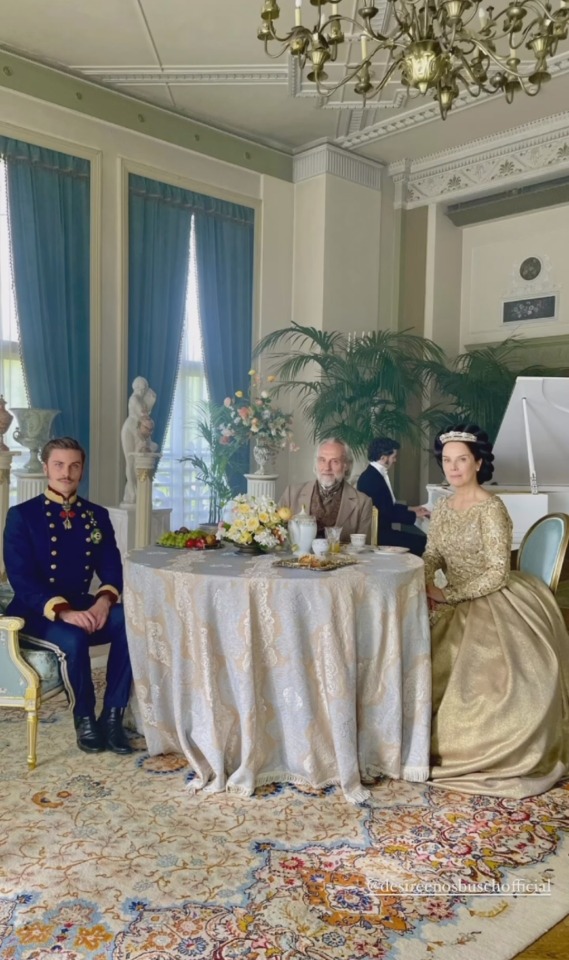
Jannik Schümann (Emperor Franz Joseph), Daniel Friedrich (Archduke Franz Karl) and Désirée Nosbusch (Archduchess Sophie) behind the scenes of the third season of Sisi (2021).
#Sisi#Sisi (2021)#costume drama#historical drama#period drama#Jannik Schümann#Daniel Friedrich#Désirée Nosbusch#emperor franz joseph#Franz Joseph of Austria#Archduke Franz Karl of Austria#Archduchess Sophie of Austria#Princess Sophie of Bavaria#german series#german tv#behind the scenes#sisi.rtl
5 notes
·
View notes
Text
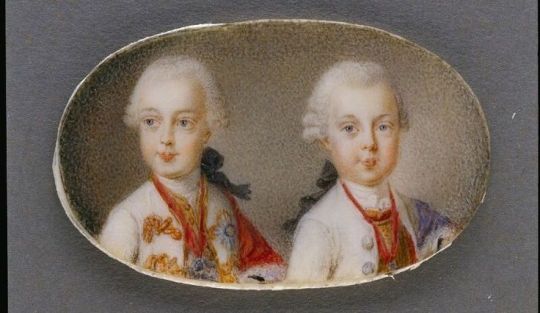
Ferdinand Karl and Maximilian Franz of Austria. By Antonio Bencini.
#erzherzogtum österreich#haus habsburg lothringen#erzherzog#archduke#maximilian franz of austria#ferdinand karl of austria#antonio bencini#royalty
4 notes
·
View notes
Text

Archduke Franz Salvator Maria Joseph Ferdinand Karl Leopold Anton of Padua, Johann Baptist Januarius Aloys Gonzaga Rainer Benedikt Bernhard of Austria
Austrian vintage postcard
#vintage#tarjeta#joseph#maria joseph ferdinand karl leopold anton#franz salvator#salvator#maria#archduke#briefkaart#franz#postcard#photography#gonzaga#leopold#postal#carte postale#sepia#padua#ephemera#januarius aloys#baptist#anton#historic#karl#benedikt bernhard#austria#aloys#ansichtskarte#rainer#bernhard
1 note
·
View note
Text
The updated list of nominees so far:
France:
Jean Lannes
Josephine de Beauharnais
Thérésa Tallien
Jean-Andoche Junot
Joseph Fouché
Charles Maurice de Talleyrand
Joachim Murat
Michel Ney
Jean-Baptiste Bernadotte (Charles XIV of Sweden)
Louis-Francois Lejeune
Pierre Jacques Étienne Cambrinne
Napoleon I
Marshal Louis-Gabriel Suchet
Jacques de Trobriand
Jean de dieu soult.
François-Étienne-Christophe Kellermann
Louis Davout
Pauline Bonaparte, Duchess of Guastalla
Eugène de Beauharnais
Jean-Baptiste Bessières
Antoine-Jean Gros
Jérôme Bonaparte
Andre Masséna
England:
Richard Sharpe (The Sharpe Series)
Tom Pullings (Master and Commander)
Arthur Wellesley, 1st Duke of Wellington
Jonathan Strange (Jonathan Strange & Mr. Norrell)
Captain Jack Aubrey (Aubrey/Maturin books)
Horatio Hornblower (the Hornblower Books)
William Laurence (The Temeraire Series)
Austria:
Klemens von Metternich
Friedrich Bianchi, Duke of Casalanza
Franz I/II
Archduke Karl
Marie Louise
Poland:
Wincenty Krasiński
Józef Antoni Poniatowski
Józef Zajączek
Maria Walewska
Russia:
Alexander I Pavlovich
Alexander Andreevich Durov
Prince Andrei (War and Peace)
Pyotr Bagration
Mikhail Miloradovich
Levin August von Bennigsen
Prussia:
Louise von Mecklenburg-Strelitz
Gebard von Blücher
Carl von Clausewitz
Frederick William III
Gerhard von Scharnhorst
Louis Ferdinand of Prussia
Friederike of Mecklenburg-Strelitz
The Netherlands:
Ida St Elme
Wiliam, Prince of Orange
The Papal States:
Pius VII
#napoleonic sexyman tournament#there is something mildly funny about the English being overwhelmingly fictional Englishmen#and Wellington
55 notes
·
View notes
Text
THIS DAY IN GAY HISTORY
based on: The White Crane Institute's 'Gay Wisdom', Gay Birthdays, Gay For Today, Famous GLBT, glbt-Gay Encylopedia, Today in Gay History, Wikipedia, and more … May 15


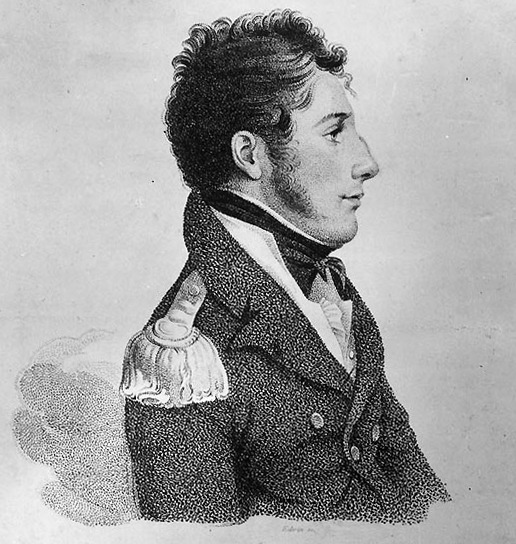
1797 – Captain Henry Allen is hanged in England for sodomy, the only ship's captain ever to be hanged for sodomy.


1842 – Archduke Ludwig Viktor of Austria (Ludwig Viktor Joseph Anton) (d.1919) from the House of Habsburg was the youngest son born to Archduke Franz Karl of Austria and Princess Sophie of Bavaria and younger brother of Emperor Franz Joseph I of Austria.
During the Revolutions of 1848 and the Vienna Uprising, pampered "Luziwuzi" with his royal family had to flee the Austrian capital. Ludwig Viktor pursued the usual military career and was appointed General of the Infantry, but had no intentions to interfere in politics. He rejected plans to marry him to Princess Imperial Isabel, daughter of Emperor Pedro II of Brazil. Instead he concentrated on building up his own art collection and had a city palace erected on Schwarzenbergplatz in Vienna according to plans designed by Heinrich von Ferstel, where he hosted homophile soirées.
Despite his mother's attempts to arrange a marriage for him with Duchess Sophie Charlotte in Bavaria, youngest sister of Empress Elisabeth, he remained a bachelor all his life. As a result of his very public homosexuality and transvestitism, culminating in a brawl at the Central Bathhouse Vienna, his brother Emperor Franz Joseph finally forbade him to stay in Vienna. The same emperor joked that he should be given a Ballerina as adjutant to keep him out of trouble.
Ludwig Viktor retired to Klessheim Palace near Salzburg where he became known as a philanthropist and patron of the arts. He died in 1919, at the age of 76, and is buried at the Siezenheim cemetery.


1871 – Germany's Paragraph 175 was adopted. (known formally as §175 StGB; also known as Section 175 in English) it was a provision of the German Criminal Code that made homosexual acts between males a crime. The statute was amended several times. The Nazis broadened the law in 1935 and increased §175 StGB prosecutions by an order of magnitude; thousands died in concentration camps, regardless of guilt or innocence. East Germany reverted to the old version of the law in 1950, limited its scope to sex with youths under 18 in 1968, and abolished it entirely in 1988. West Germany retained the Nazi-era statute until 1969, when it was limited to "qualified cases"; it was further attenuated in 1973 and finally revoked entirely in 1994 after German reunification.


1923 – Richard Avedon (d.2004) was an American fashion and portrait photographer. He worked for Harper's Bazaar and Vogue, specializing in capturing movement in still pictures of fashion, theater and dance. An obituary published in The New York Times said that "his fashion and portrait photographs helped define America's image of style, beauty and culture for the last half-century".
Avedon was born in New York City to a Jewish family. His father, Jacob Israel Avedon, was a Russian-born immigrant who advanced from menial work to starting his own successful retail dress business on Fifth Avenue called Avedon's Fifth Avenue. His mother, Anna, from a family that owned a dress-manufacturing business, encouraged Richard's love of fashion and art.
Avedon's interest in photography emerged when, at age 12, he joined a Young Men's Hebrew Association (YMHA) Camera Club. He would use his family's Kodak Box Brownie not only to feed his curiosity about the world but also to retreat from his personal life. His father was a critical and remote disciplinarian, who insisted that physical strength, education, and money prepared one for life.
Avedon attended DeWitt Clinton High School in Bedford Park, Bronx, where from 1937 until 1940 he worked on the school paper, The Magpie, with James Baldwin. As a teen, he also won a Scholastic Art and Writing Award. After graduating from DeWitt Clinton that year, he enrolled at Columbia University to study philosophy and poetry but dropped out after one year. He then started as a photographer for the Merchant Marines, taking ID shots of the crewmen with the Rolleiflex camera his father had given him.In 1944, Avedon began working as an advertising photographer for a department store, but was quickly endorsed by Alexey Brodovitch, who was art director for the fashion magazine Harper's Bazaar. Lillian Bassman also promoted Avedon's career at Harper's. In 1945, his photographs began appearing in Junior Bazaar and, a year later, in Harper's Bazaar.
In 1946, Avedon had set up his own studio and began providing images for magazines including Vogue and Life.
Richard Avedon, the most successful fashion photographer of all time, was married twice and fathered a son, but now, years after his death, he is being outed as a bisexual.
Michael Gross reveals in "Focus: The Secret, Sexy, Sometimes Sordid World of Fashion Photographers" that Avedon and his first wife, Dorcas "Doe" Nowell, spent their summers in Cherry Grove, the gay mecca on Fire Island.
Nowell — the model for Audrey Hepburn's character in "Funny Face" — later told a daughter that Avedon was gay. "It was not a secret between them," Doe's son Nowell Siegel told Gross.
Neither was it a secret to Avedon's early assistant Earl Steinbicker, who thinks Avedon hired him because "he was attracted to me."
Steinbicker believes Avedon had an affair with the writer James Baldwin, a high-school classmate, but later fell out with him when Baldwin was late with an essay for one of Avedon's books.


1928 – Mickey Mouse made his debut in a test screening of Plane Crazy on May 15, 1928. Plane Crazy is the first Mickey Mouse cartoon to be made, but not the first to be released. That honor goes to Steamboat Willie, which was released later in 1928. Plane Crazy was a silent cartoon, and was only released after sound was added following the success of Steamboat Willie. Who knew that 63 years later in 1991 Gay Days at Disney World would begin?


1930 – The birthday of neo-dadaist painter Jasper Johns. He is best known for his Flag painting (1954-55). Born in Georgia, Johns spent his early life in South Carolina. After a stint in the service where he was stationed in Sendai, Japan during the Korean War, in 1954, after returning to New York, Johns met Robert Rauschenberg and they became long term lovers. In the same period he was strongly influenced by the gay couple Merce Cunningham , choreographer, and John Cage, composer. Working together they explored the contemporary art scene, and began developing their ideas on art.
In 1958, gallery owner Leo Castelli discovered Johns while visiting Rauschenberg's studio. Castelli gave him his first solo show. It was here that Alfred Barr, the founding director of New York's Museum of Modern Art, purchased four works from his exhibition. In 1963, Johns and Cage founded Foundation for Contemporary Performance Arts, now known as Foundation for Contemporary Arts in New York City. Johns currently lives in Sharon, Connecticut and the Island of Saint Martin.
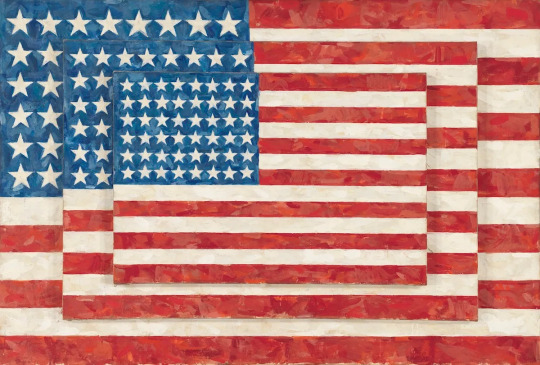
Three Flags, 1958.
On February 15th, 2011 he received the Presidential Medal of Freedom from President Barack Obama, becoming the first painter or sculptor to receive a Presidential Medal of Freedom since Alexander Calder in 1977.


1948 – Ron Peck (d.2022) was a pioneer in Britain’s independent film scene of the 1970s and 80s, whose Nighthawks is a milestone in LGBTQIA+ cinema.
Peck was born and raised in Merton Park, south-west London. His father, Richard Peck, was an estate agent and later property developer, while his mother, Joan (nee Lindsay), was in the Women’s Auxiliary Air Force during the Second World War.
Ron was a film buff from a young age. As a teenager, he corresponded with and even met some of his favourite directors, including Nicholas Ray, who brought Peck’s letter with him to an on-stage interview at the National Film theatre in London, and singled him out in the audience.
As a gay man growing up in Merton Park in the 1950s and early 60s, traditional Hollywood presented an exciting alternative to a repressive England when homosexuality was still illegal and rejected as a social ill.
He was there right from the start of the British independent film scene as it developed and became more organised in the late 1960s. He trained at the London Film School and in the day worked as a teacher – foreshadowing the story of Nighthawks, as yet unwritten – as well as working on the box office at the Other Cinema, the organisation at the time for political, alternative film.
At the London Film School, he made the short film Its Ugly Head (1974) about a closeted gay man in an unhappy marriage.
A founder member of the Four Corners collective – one of the first such groupings in the 1970s – he and his friends made films that examined social and political histories while establishing a production, screenings and exhibition site of the same name in the East End, which survives to this day.
Reckoning with his own homosexuality prompted his most famous film, Nighthawks (named after the famous Hopper painting). The film took shape around a teacher character who struggles to come out to his friends and colleagues as he becomes newly acquainted with the underground gay scene. It was the first British feature film explicitly about contemporary gay life, made by out gay people and presenting a powerful portrait of pre-AIDS London. Through it Peck met Paul Hallam, the Nighthawks co-writer who became an important collaborator and confidant. The status of the male body and its place in classical art, while remaining homo-eroticised yet verboten, prompted the witty 1985 short What Can I Do with a Male Nude? 1987’s Empire State extended the scope of enquiry, looking at the redevelopment of London’s Docklands and the gangsters and corruption that moved in as the city remapped itself. Peck interviewed male sex workers for the scenes set around Piccadilly.


1954 – Boze Hadleigh aka George Hadley-Garcia is an American journalist writer of celebrity gossip and entertainment.
Hadleigh has an M.A. in journalism and has traveled to more than 60 countries. He has published 18 books and has written for more than 100 magazines in the U.S. and abroad, including TV Guide, Playboy, and Us Weekly. He won $16,400 as a contestant on the March 20, 1998 episode of the game show Jeopardy!
He lives in Beverly Hills, California and Sydney, New South Wales. His latest books are Broadway Babylon (2007), and Mexico's Most Wanted (2007). Hadleigh's books have been translated into 14 languages, and half of his first 16 books have been made into television specials and documentaries in the U.S., U.K., and elsewhere.
Several of his books deal with pop culture and/or entertainment history, and how the media and status quo shape and manipulate audiences' perceptions and opinions. Six of his eighteen books are exclusively about the LGBT presence in and contributions to entertainment; Hadleigh himself is gay.Some of Hadleigh's books are quotes collections, some are histories and overviews, and some are interview books with noted personalities in movies; several portions of these interviews, as with Rock Hudson, were published in periodicals before the subjects died. The author had committed himself not to out any of his subjects against their will — at least as long as they were living. Some interviewees agreed to speak only on condition that the published result be posthumous. Nearly all the interviews were recorded; a few individuals, like director Rainer Werner Fassbinder and Mae West, however, refused to speak if they were recorded—which was their policy with other interviewers as well.
Hadleigh's second book, Conversations With My Elders (republished as Celluloid Gaze) includes interviews with actors Sal Mineo and Rock Hudson; directors George Cukor, Luchino Visconti, Fassbinder, and designer, photographer/author Cecil Beaton.Their frank conversations with the author reveal much about the lives and careers of these celebrities and how their homosexuality affected both. According to Midwest Book Review, the book
"is a ground breaking collection of interviews with six men who share a common and unusual trait relevant to their success in the movie-making industry: they were gay, and during their lifetimes, they concealed their sexual orientation from the public. Yet these interviews are remarkably open and candid about how these men's sexuality affected their lives and careers. … 'Celluloid Gaze' is an informed and informative contribution to Film History and Gay Studies academic reference collections and supplemental reading lists, as well as highly recommended reading for fans of the film work of Sal Mineo, Luchino Visconti, Cecil Beaton, George Cukor, Rainer Werner Fassbinder, and Rock Hudson."

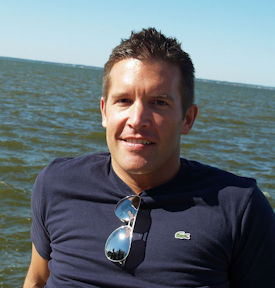
1967 – Andy Towle, born in Chicago, Illinois, is an American blogger and media commentator based in New York City. Towle, who is gay, started his blog Towleroad in 2003 while he was in Los Angeles. The blog focuses on gays, pop culture, photography, politics, media, entertainment, technology, and travel. Towle works full-time creating Towleroad.
He holds two B.A.s from Vassar College in Art History and English and was awarded the W.K. Rose Fellowship in the Creative Arts from Vassar, a Wallace Stegner graduate fellowship at Stanford University as well as two writing fellowships at the Fine Arts Work Center in Provincetown, Massachusetts. While in Provincetown he not only produced poetry but also worked as a pool boy and a bartender at The Boatslip. After moving to New York in 1992, he became a bartender and later a manager at the iconic 1990s Chelsea gay bar Splash. He returned to New York in 2004 after living first in Hong Kong (where he was for several years partnered with Amazing Race winner Chip Arndt) and later in Los Angeles.
Towle was previously the editor in chief of Genre magazine, a North American gay men's lifestyle publication and editor at large for The Out Traveler, a North American gay travel quarterly.
Towle's poetry has appeared in The Paris Review in 2001, and in Poetry Magazine on many occasions from 1988 through 1997. He currently lives in the Chelsea neighborhood of Manhattan with his partner of five years and Emmy Award-winner, David Grant.
Occasionally Towle hands over control of the blog to guest editors including the novelist Christopher Rice, photographer Lewis Payton, Josh and Josh of the blog Josh and Josh are Rich and Famous and Kenneth Walsh of kenneth in the (212).


1975 – Josh McNey is an American photographer and creative director.
McNey was born in Westlake Village, CA and grew up in the surrounding suburbs. McNey began photographing at an early age, taking photos of his brothers and friends while they skated and surfed. After high school McNey spent seven years in the United States Marine Corps.
In 2002 McNey moved to New York to attend Columbia University. He photographed the Columbia wrestling team while attending university. McNey's photographs have appeared in Crush, Dust, Flaunt Magazine, XLR8R, Positive Magazine, Kink Magazine, Kaltbult and Vision LA.
In 2011 McNey had his first solo show, called Protect from Light, at the New York gallery, Casa de Costa. McNey's work is also included in the Elton John Photography Collection and The Leslie Lohman Museum of Gay and Lesbian Art. He currently lives and works in New York City.

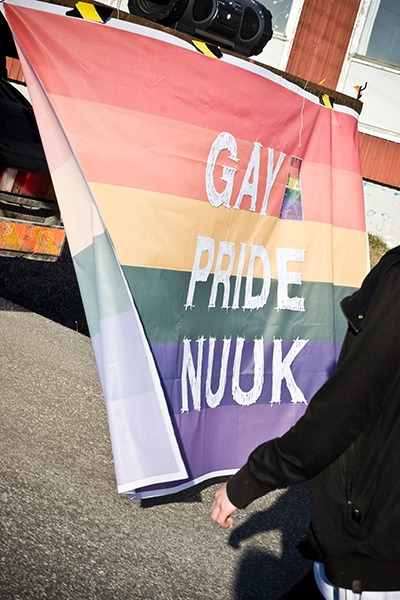
2010 – Greenland: The country's first LGBT Pride parade takes place. It's the second largest public gathering in Greenland with over 2% of the country's population attending.


12 notes
·
View notes
Photo

Amalie Auguste of Bavaria, Queen of Saxony, early 1800s.
Amalie Auguste (13 November 1801, in Munich – 8 November 1877, in Dresden) was a Bavarian princess by birth and Queen of Saxony by marriage to King John of Saxony. Amalie was the fourth child of King Maximilian I Joseph of Bavaria and his second wife Caroline of Baden. She was the identical twin sister of Elisabeth Louise, later Queen of Prussia as wife of Frederick William IV of Prussia. Three other sisters married King Frederick Augustus II of Saxony, Archduke Franz Karl of Austria and Maximilian Joseph, Duke in Bavaria.
#Amalie Auguste#Amalie Auguste of Bavaria#twin#twin sisters#female portrait#female#portrait#classical art#fine arts#woman#princess#queen#nobility#noble#aristocrat#western civilization#europe#european#europa#world history
59 notes
·
View notes
Photo



The three wives of Archduke Karl Ludwig of Austria, younger brother of Franz Joseph I.
Margaretha of Saxony: His first wife was his cousin, they were married on November 4th, 1856. The marriage was described as happy but did not last long. Margaretha contracted typhoid while on a trip to Italy and died aged 18 on September 15th, 1858. The couple didn’t have any children.
Maria Annunciata of Bourbon-Two Sicilies: His second marriage was in October of 1862, and was also said to have been happy. The bride suffered from poor health, having had a seizure during mass the day of the wedding and was later found to be suffering from tuberculosis. They would have four children together, Archduke Franz Ferdinand, Archduke Otto, Archduke Ferdinand Karl, and Archduchess Margarete Sophie. Maria Annunciata became increasingly ill after their daughter’s birth, and died of tuberculosis on May 4th, 1871 when she was 28 years old.
Maria Theresa of Portugal: His third marriage was on July 23, 1873 and the bride was described as one of the most beautiful women in Europe. The couple had two daughters together, Archduchess Maria Annunciata (Named after his second wife) and Archduchess Elisabeth Amalie. It was not a happy marriage, as Karl Ludwig is said to have been very cruel to her. Maria Theresa stood in during court functions for her sister in law, Empress Elisabeth, who withdrew from court life after her son’s suicide. Karl Ludwig died in 1896, and Maria Theresa would outlive him by nearly 50 years, dying during the Second World War.
#archduke karl ludwig#Margaretha of Saxony#Maria Annunciata of Bourbon-Two Sicilies#Maria Theresa of Portugal#house of habsburg lorraine#austria#long live the queue
30 notes
·
View notes
Photo

Archduke Franz Karl of Austria (1802–1878). By Leopold Kupelwieser.
He was the father of two emperors: Franz Joseph I of Austria and Maximilian I of Mexico. Through his third son Karl Ludwig, he was the grandfather of Archduke Franz Ferdinand of Austria (whose assassination sparked the hostilities that led to the outbreak of World War I) and the great-grandfather of the last Habsburg emperor Karl I.
#Leopold Kupelwieser#erzherzog#archduke#erzherzog franz karl#haus habsburg lothringen#full length portrait#house of habsburg lorraine#full-length portrait#in armour#kaisertum österreich#mexican empire#imperio mexicano#ww1
14 notes
·
View notes
Photo
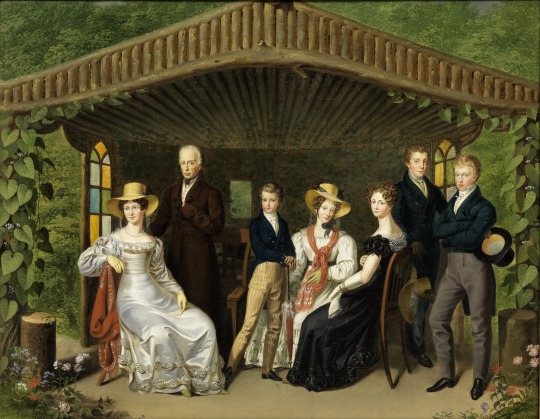

The Imperial Family Around the Duc de Reichstadt in a Gazebo by Leopold Fertbauer, 1926.
From left to right: Caroline Augusta of Bavaria, Empress of Austria; Francis I, Emperor of Austria; Napoleon II of France, Duke of Reichstadt; Princess Sophie of Bavaria, Archduchess of Austria; Marie-Louise of Austria, Duchess of Parma; Ferdinand I of Austria; and Archduke Franz Karl of Austria.
link

32 notes
·
View notes
Note
Okay, a weird question: the relationship between Sophie of Bavaria and her husband! Because like. I have this impression from them that they didn't exactly love each other, but got along fine, and also this one tumblr blog suggested a show about Sophie (which I find less interesting as a concept than a show about the 1848 revolution with Sophie as a major character, but nevermind) and it got me thinking about Franzi's old man...
Hello!! Sorry it took me so long (literal months); this is a super interesting question because I wonder about this too. Given that archduke Franz Karl is a very elusive figure, and that most of Sophie's biographies not only are in German, but are also just impossible to get (for me, living in the other side of the world), so I didn’t have much to work with. To answer this ask I used as my main source Jean-Paul Bled’s biography Sophie de Habsbourg, which quotes a lot of Sophie’s letters and diary entries, but there’s probably more out there in other books.
So what do we now about Sophie and Franz Karl’s relationship? Their marriage was arranged, as it was customary. It was part of King Max’s policy of strengthening Bavaria’s links to Austria (after a very long time of the two countries being enemies). Also Sophie’s half-sister Empress Caroline was really into the idea and apparently was the main promoter of the marriage project at the Viennese court (because who doesn’t want their sister to become their daughter-in-law?).
Sophie and Franz Karl met in May of 1824, on a visit the archduke did to the Bavarian royals at their residence in Tegernsee. We don’t have any first impression of Sophie on her future husband, but we do have Queen Caroline of Bavaria’s. She was… hmm… not impressed:
What to say of our little archduke? I thank Heaven that Sophie, with all the qualities that nature provided her, is so reasonable. He is a good boy, worried to do well. He solicits everyone’s advises, but he is terrible (…) He bores me to death. Sometimes I can’t stand it anymore. It’s truth, they say that he’s cultivated and starting to be popular. That should rejoice me, but sometimes I want to hit him. Sophie is so pretty and quick-witted.
Caroline after talking to Franz Karl apparently???

The one family member that was happy about the marriage was Sophie’s half-brother Crown Prince Ludwig, who wrote to Franz Karl that the closeness of their houses “can only have beneficial effects for our people, that Austria and Bavaria remain linked to each other, is of extreme importance for both of them”. A congratulation that screams political union through and through.
Franz Karl wasn’t considered good looking nor clever nor charismatic - his only true passion was hunting. Sophie was the exact opposite. From the get go they didn’t seem very compatible, but neither voiced any objection to the union and so they got married November 4 of 1824.
I couldn’t find much details of Sophie and Franz Karl’s first years of marriage, Jean-Paul Bled barely mentions him, which could be a result of Sophie herself not mentioning much her husband in her correspondance (Bled notes that during her first trip to Lombardy-Venetia with Franz Karl and emperor Franz in 1825, Sophie only mentions him in her letters once in all the time they were there). But that doesn’t necessarily have to mean they were in bad terms. Perhaps she really thought he was too boring to mention, perhaps she just was being considerate to her mother Caroline who we know did find him violently boring. At least they were fulfilling their marital duties, since Sophie got pregnant at least twice (some claim five times) during the first six years of her marriage, but all these pregnancies ended in miscarriages.
These first years of marriage are also the years from where the rumors of Sophie’s infidelities, either with Napoleon II or with Prince Gustav of Vasa, come from. For what I could find, the agreement is that there just isn’t enough evidence to prove this, and also that it would’ve been very stupid of her part to have an affair under her husband’s nose. Franz Karl, for his part, was either ignorant or indifferent to these rumors, since he never doubted the paternity of his children. After the birth of archduke Karl Ludwig, Sophie wrote that:
I can’t thank Heaven enough for not ceasing to bless me in my children that to this day have given me nothing but joy and satisfaction. My husband is very happy with this third boy and the emperor is enthusiastic (…). He still wants to have them. I’d like to know what he intends to do with this army of archdukes.
So we can assume that everything was going fine in their intimacy.
Franz Karl’s only moment at the center stage of Habsburg history is when he abdicated in favor of his eldest son, and yet he still remains a shadowy figure. We don't really know what he thought or felt during this time, but Sophie mentioned in her diary several times meeting with her husband at her salon the days prior to Emperor Ferdinand’s abdication, and while she doesn’t say what they talked about, giving the dates we could infer that perhaps he wasn’t so eager to give up being emperor as it is often claimed and that Sophie really needed to convince him.
They also were devoted parents who loved their children very much, and were devastated when their only daughter, archduchess Maria Anna, died aged only four years-old after a seizure. Sophie and Franz Karl both agreed that Maria Anna’s body wouldn’t go through the traditional mortuary Habsburg rites of removing her heart because they couldn’t stand the idea of their little girl’s body being cut.
But probably the hardest situation they had to go through as parents was the death of their son emperor Maximilian, executed in Mexico in 1867. Franz Karl, who learned of the news from his son Franz Josef, was the one who told Sophie. She narrates it in her diary as it follows:
The alarmed face of Fr[anz] alarmed me, I asked what was it, if there were news of Max, he told me they weren’t good, I guessed everything and cried throwing myself in his arms “shot, shot”
Franz Karl was at his wife’s deathbed with the whole family, and after Sophie died May 28 of 1872 “collapsed with grief, Franz Karl threw himself at the arms of his eldest son”. He prayed next to her body everyday after, until she was buried in the Capuchin crypt.
I don’t know if I answered your question, since their relationship is hard to put together for me too. Did they love each other? If we think of a devoted, almost obsessive love like the one their son Franz Josef had for his wife, then no. But after everything they went through together during forty-eight years, I find hard to think they did not had any feelings for each other. If they didn’t like each other at first, by old age they both had learned to enjoy each other’s company, since they were together often in the later part of their marriage. Overall their marriage seems to have been an harmonious, if not passionate, at least friendly one.
And I’m all down for a series about Sophie, no matter in which time is set, because honestly I just want something different other than the latest Sisi series whose only goal is to show off how different they are from Marischka’s trilogy and yet they still rely heavily on the mythology established by those movies. A well written series about the 1848 revolution from Sophie's POV would be fantastic and now I want it.
#sophie of bavaria archduchess of austria#archduke franz karl of austria#archduchess maria anna of austria#franz josef i of austria#maximilian i of mexico#archduke karl ludwig of austria#queen caroline of bavaria#ludwig i of bavaria#asks
18 notes
·
View notes
Text
The Family <3
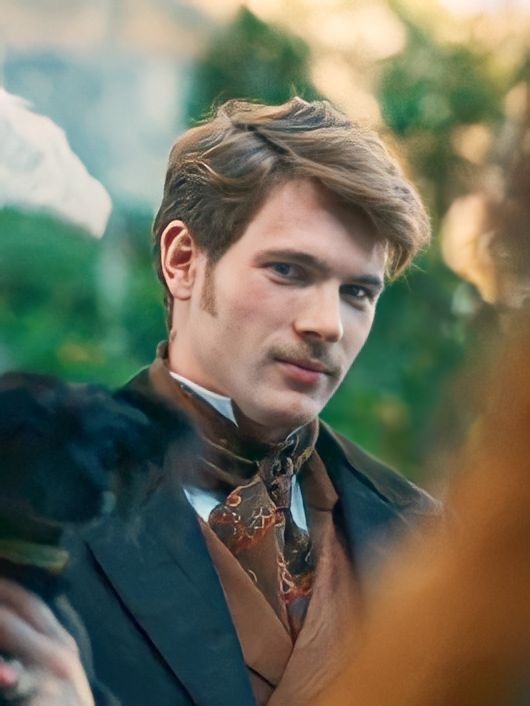
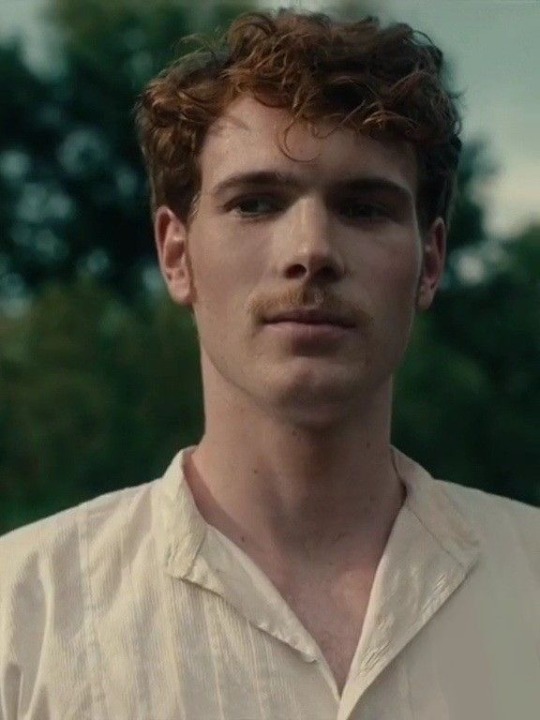
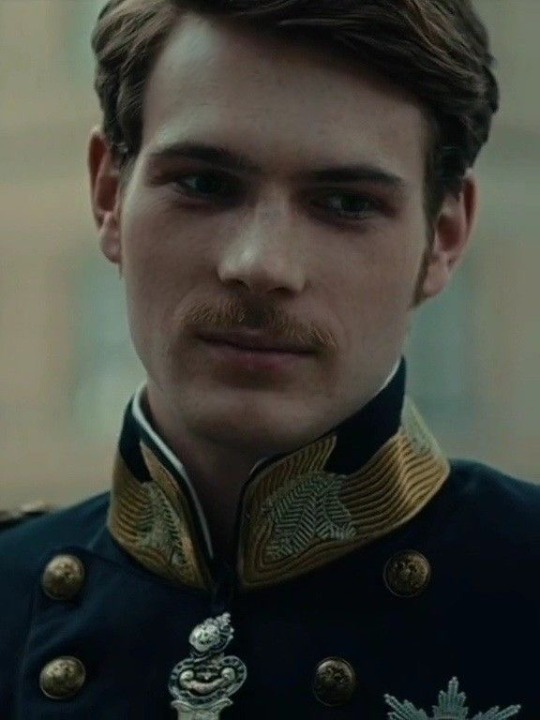
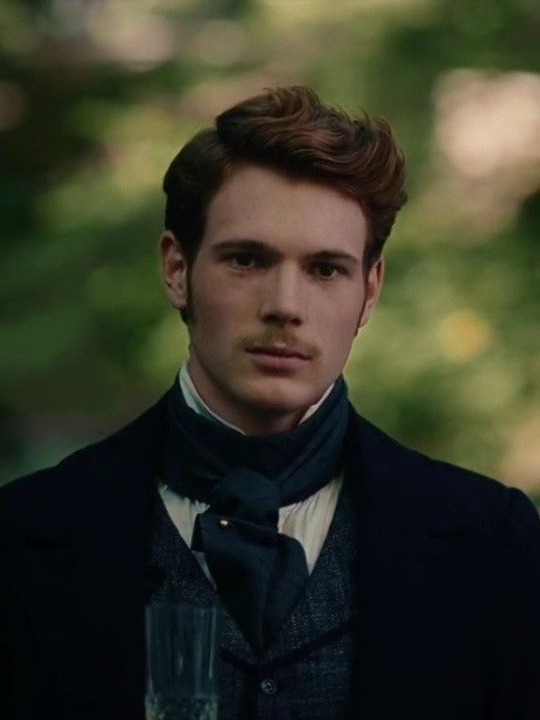
emperor Franz Joseph Of Austria And King Of Hungary (1816-1905)
age: 35
height: 6’4
birthday: 18th august
early life:
Franz Joseph was born on 18 August 1816 in the Schönbrunn Palace in Vienna (on the 65th anniversary of the death of Francis of Lorraine) as the eldest son of Archduke Franz Karl (the younger son of Francis I), and his wife Sophie, Princess of Bavaria. Because his uncle, reigning from 1835 as the Emperor Ferdinand, was disabled by seizures, and his father unambitious and retiring, the mother of the young Archduke "Franzi" brought him up as a future emperor, with emphasis on devotion, responsibility and diligence.

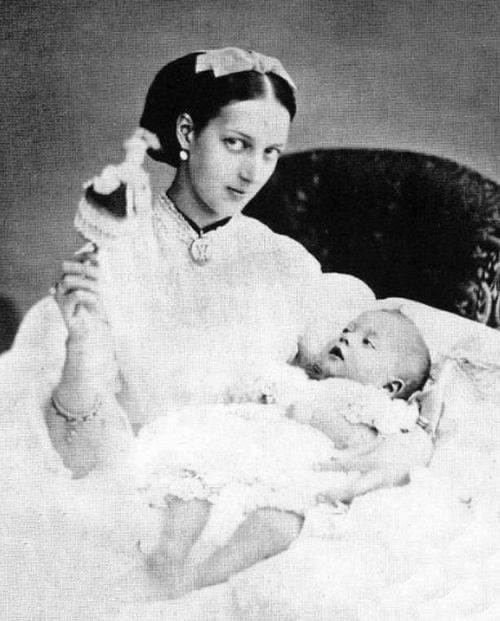
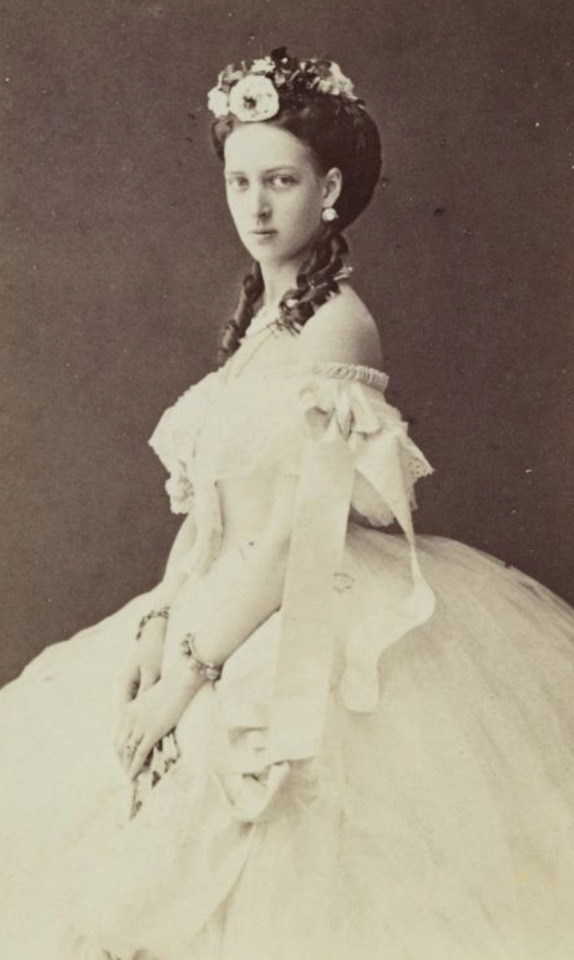
Empress Alexandra Of Austria, Queen Of Hungary (1816-1907)
age: 35
height: 5’10
birthday: 8th March
Early Life:
Princess Alexandra Caroline Marie Charlotte Louise Julia, or "Alix", as her immediate family knew her, was born at the Yellow Palace, an 18th-century town house at 18 Amaliegade, immediately adjacent to the Amalienborg Palacecomplex in Copenhagen.[1] Her father was Prince Christian of Schleswig-Holstein-Sonderburg-Glücksburg and her mother was Princess Louise of Hesse-Kassel.[2] She had five siblings: Frederick, William (later George I of Greece), Dagmar (later Empress of Russia), Thyra and Valdemar.
Her father's family was a distant cadet branch of the Danish royal House of Oldenburg, which was descended from King Christian III. Although they were of royal blood,[a] the family lived a comparatively modest life. They did not possess great wealth; her father's income from an army commission was about £800 per year and their house was a rent-free grace and favour property. Occasionally, Hans Christian Andersen was invited to call and tell the children stories before bedtime.

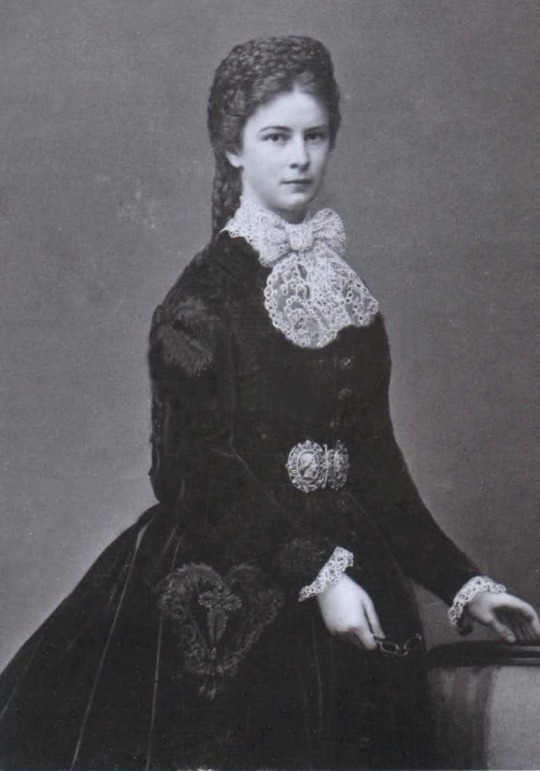

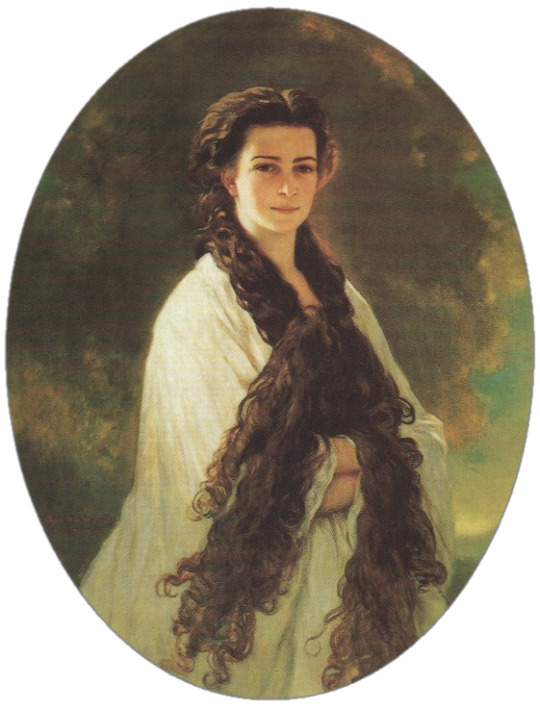

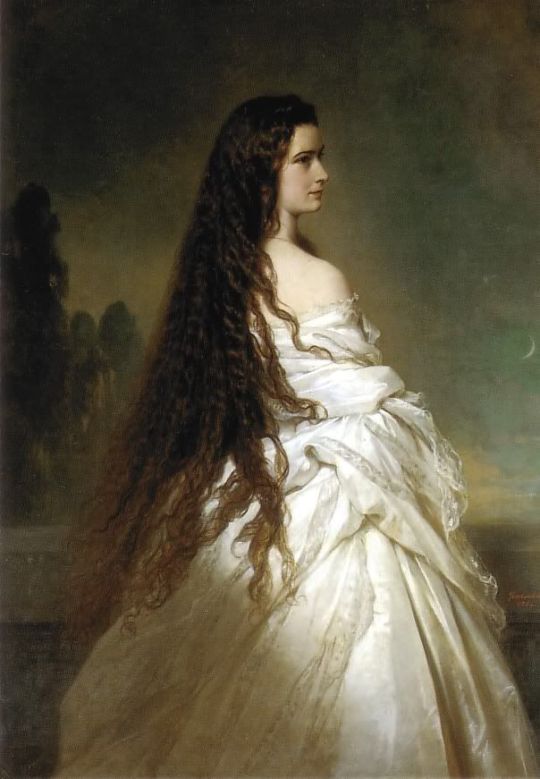
GrandDuchess Elisabeth Of Austria, Later Empress Of Austria And Queen Of Hungary at 19 Years old (1837-1927)
age: 14-15
height: 5’8
birthday: 24th December

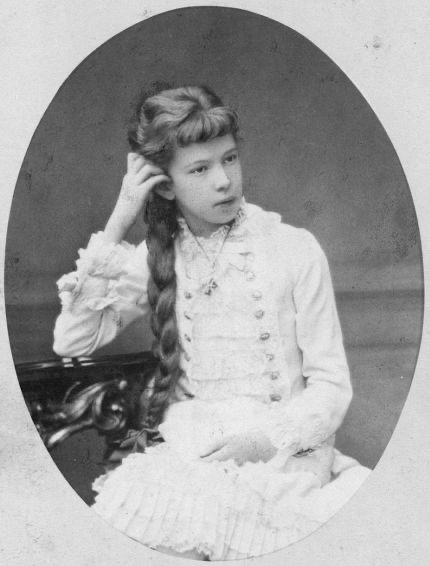
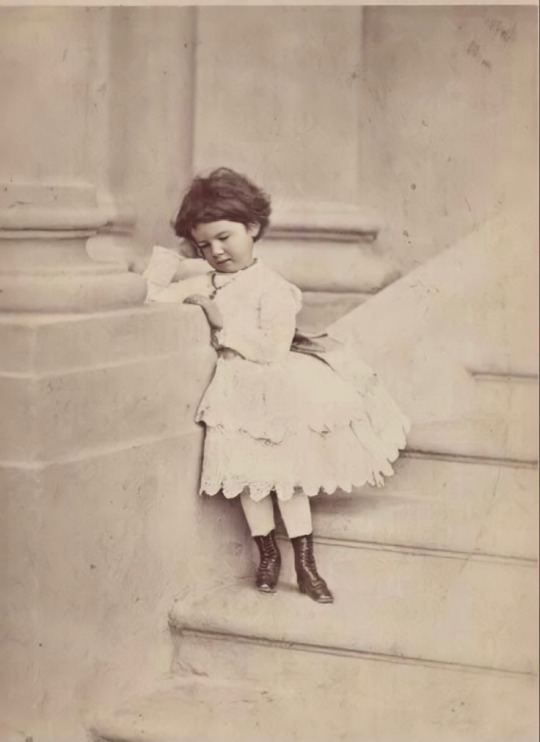
Marie Valerie (1840-1943) lmao Valerie lived a long time
Height: 5’3
age: 10
birthday: 24th april
5 notes
·
View notes
Text
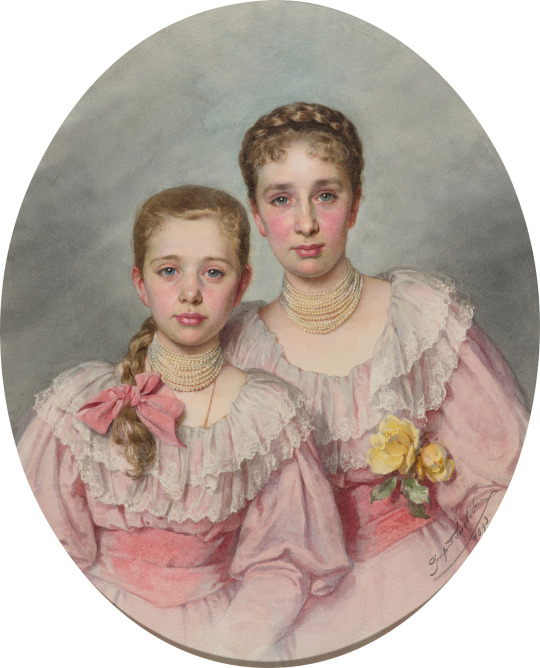
Archduchesses Maria Annunziata (1876-1961) and Elisabeth Amalie of Austria (1878-1960). By Josefine Swoboda.
They were the daughters of Archduke Karl Ludwig of Austria, brother of Emperor Franz Joseph.
Maria Annunziata was Abbess of the Theresia Convent in the Hradschin, Prague; and Elisabeth Amalie Princess of Liechtenstein through her marriage to Prince Alois of Liechtenstein.
#josefine swoboda#liechtenstein museum#haus liechtenstein#german aristocracy#maria annunziata of austria#elisabeth amalie of austria#princess of liechtenstein#fürstentum liechtenstein#erzherzogtum österreich#haus habsburg lothringen#house of habsburg lorraine#erzherzogin#Theresian Institution of Noble Ladies#Tereziánský ústav šlechtičen
19 notes
·
View notes
Photo


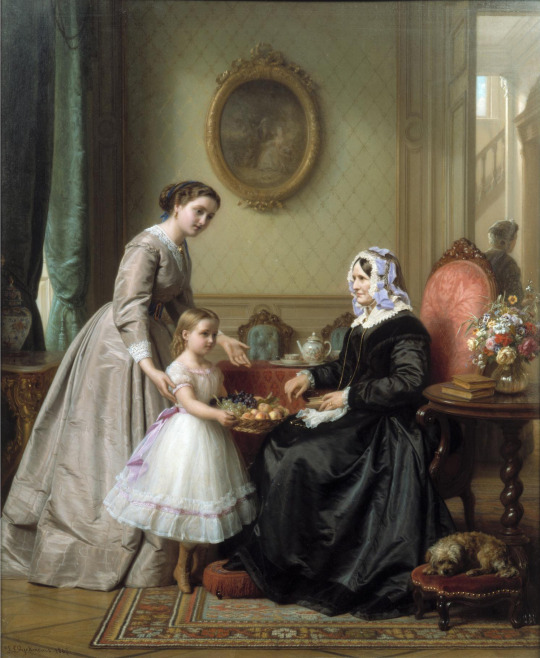

Images of 1860s dress (from top to bottom) -
1860 (reproduced in 1889 by Gustav William Henry Mullins) Austrian imperial family group photo (Royal Collection RCIN 2906856). From their Web site 2000X1586 @72 822kj. Photograph of a group portrait of members of the Austrian Royal family. In the back row, standing, from left to right, are Emperor Franz Josef of Austria, Archduke Maximilian (later the ill-fated Emperor Maximillian of Mexico), Charlotte, Archduchess Maximilian (later Empress Carlota), Archduke Ludwig of Austria and Archduke Karl Ludwig of Austria. In the front row, seated, from left to right are Empress Elisabeth of Austria (Sisi) with Crown Prince Rudolf on her lap, Archduchess Gisela of Bavaria, Archduchess Sophie of Austria and Franz Karl, Archduke of Austria.
1860-1865 Young woman by Raimundo de Madrazo (Setdart - 13Jul22 auction Lot 62). From invaluable.com-auction-lot-raimundo-de-madrazo-y-garreta-rome-1841-versaille-62-c-c4249d59ad; erased spots w Pshop 2867X3544 @150 1.7Mj.
1867 Grandmother's birthday by Josephus Laurentius Dyckmans (V&A). From tumblr.com/blog/view/the-perdita 1495X1823 @72 717kj.
1868 Luise Limbach by Conrad Freyberg (Braunschweigisches Landesmuseum - specific location ?). From Wikimedia 2544X3120 @299 2.9Mj.
#1860s fashion#early Victorian fashion#Gustav William Henry Mullins#Empress Elisabeth#Sisi#Empress Carlota#Archduchess Sophie#Raimundo de Madrazo#Josephus Laurentius Dyckmans#Luise Limbach#Conrad Freyberg#feathered hat#high neckline#straight hair#bonnet#crinoline#off shoulder neckline#quarter-length sleeves#chignon#cap#lace collar#banana sleeves#back-flared cuffs#curly hair#side curl coiffure#off shoulder V neckline#pleated bertha#lace bertha#lace cuffs#V waistline
12 notes
·
View notes
Text
Friends, enemies, comrades, Jacobins, Monarchist, Bonapartists, gather round. We have an important announcement:
The continent is beset with war. A tenacious general from Corsica has ignited conflict from Madrid to Moscow and made ancient dynasties tremble. Depending on your particular political leanings, this is either the triumph of a great man out of the chaos of The Terror, a betrayal of the values of the French Revolution, or the rule of the greatest upstart tyrant since Caesar.
But, our grand tournament is here to ask the most important question: Now that the flower of European nobility is arrayed on the battlefield in the sexiest uniforms that European history has yet produced (or indeed, may ever produce), who is the most fuckable?
The bracket is here: full bracket and just quadrant I
Want to nominate someone from the Western Hemisphere who was involved in the ever so sexy dismantling of the Spanish empire? (or the Portuguese or French American colonies as well) You can do it here
The People have created this list of nominees:
France:
Jean Lannes
Josephine de Beauharnais
Thérésa Tallien
Jean-Andoche Junot
Joseph Fouché
Charles Maurice de Talleyrand
Joachim Murat
Michel Ney
Jean-Baptiste Bernadotte (Charles XIV of Sweden)
Louis-Francois Lejeune
Pierre Jacques Étienne Cambrinne
Napoleon I
Marshal Louis-Gabriel Suchet
Jacques de Trobriand
Jean de dieu soult.
François-Étienne-Christophe Kellermann
17.Louis Davout
Pauline Bonaparte, Duchess of Guastalla
Eugène de Beauharnais
Jean-Baptiste Bessières
Antoine-Jean Gros
Jérôme Bonaparte
Andrea Masséna
Antoine Charles Louis de Lasalle
Germaine de Staël
Thomas-Alexandre Dumas
René de Traviere (The Purple Mask)
Claude Victor Perrin
Laurent de Gouvion Saint-Cyr
François Joseph Lefebvre
Major Andre Cotard (Hornblower Series)
Edouard Mortier
Hippolyte Charles
Nicolas Charles Oudinot
Emmanuel de Grouchy
Pierre-Charles Villeneuve
Géraud Duroc
Georges Pontmercy (Les Mis)
Auguste Frédéric Louis Viesse de Marmont
Juliette Récamier
Bon-Adrien Jeannot de Moncey
Louis-Alexandre Berthier
Étienne Jacques-Joseph-Alexandre Macdonald
Jean-Mathieu-Philibert Sérurier
Catherine Dominique de Pérignon
Guillaume Marie-Anne Brune
Jean-Baptiste Jourdan
Charles-Pierre Augereau
Auguste François-Marie de Colbert-Chabanais
England:
Richard Sharpe (The Sharpe Series)
Tom Pullings (Master and Commander)
Arthur Wellesley, 1st Duke of Wellington
Jonathan Strange (Jonathan Strange & Mr. Norrell)
Captain Jack Aubrey (Aubrey/Maturin books)
Horatio Hornblower (the Hornblower Books)
William Laurence (The Temeraire Series)
Henry Paget, 1st Marquess of Anglesey
Beau Brummell
Emma, Lady Hamilton
Benjamin Bathurst
Horatio Nelson
Admiral Edward Pellew
Sir Philip Bowes Vere Broke
Sidney Smith
Percy Smythe, 6th Viscount Strangford
George IV
Capt. Anthony Trumbull (The Pride and the Passion)
Barbara Childe (An Infamous Army)
Doctor Maturin (Aubrey/Maturin books)
William Pitt the Younger
Robert Stewart, 2nd Marquess of Londonderry (Lord Castlereagh)
George Canning
Scotland:
Thomas Cochrane
Colquhoun Grant
Ireland:
Arthur O'Connor
Thomas Russell
Robert Emmet
Austria:
Klemens von Metternich
Friedrich Bianchi, Duke of Casalanza
Franz I/II
Archduke Karl
Marie Louise
Franz Grillparzer
Wilhelmine von Biron
Poland:
Wincenty Krasiński
Józef Antoni Poniatowski
Józef Zajączek
Maria Walewska
Władysław Franciszek Jabłonowski
Adam Jerzy Czartoryski
Antoni Amilkar Kosiński
Zofia Czartoryska-Zamoyska
Stanislaw Kurcyusz
Russia:
Alexander I Pavlovich
Alexander Andreevich Durov
Prince Andrei (War and Peace)
Pyotr Bagration
Mikhail Miloradovich
Levin August von Bennigsen
Pavel Stroganov
Empress Elizabeth Alexeievna
Karl Wilhelm von Toll
Dmitri Kuruta
Alexander Alexeevich Tuchkov
Barclay de Tolly
Fyodor Grigorevich Gogel
Ekaterina Pavlovna Bagration
Ippolit Kuragin (War and Peace)
Prussia:
Louise von Mecklenburg-Strelitz
Gebard von Blücher
Carl von Clausewitz
Frederick William III
Gerhard von Scharnhorst
Louis Ferdinand of Prussia
Friederike of Mecklenburg-Strelitz
Alexander von Humboldt
Dorothea von Biron
The Netherlands:
Ida St Elme
Wiliam, Prince of Orange
The Papal States:
Pius VII
Portugal:
João Severiano Maciel da Costa
Spain:
Juan Martín Díez
José de Palafox
Inês Bilbatua (Goya's Ghosts)
Haiti:
Alexandre Pétion
Sardinia:
Vittorio Emanuele I
Lombardy:
Alessandro Manzoni
Denmark:
Frederik VI
Sweden:
Gustav IV Adolph
48 notes
·
View notes
Text
Hunting after the war
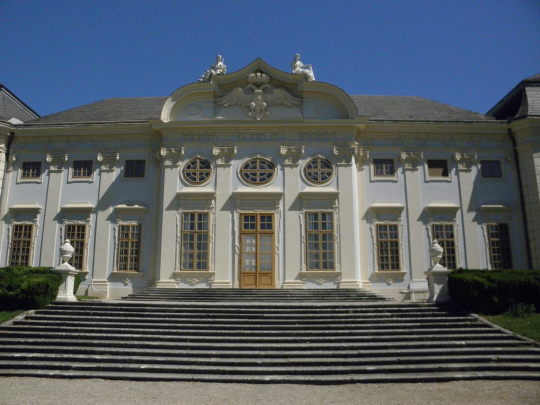
When the architect Johann Lukas von Hildebrandt began planning the construction of Schloß Halbturn in 1701, it was only a hunting lodge and Austria was still under the rule of Emperor Joseph I. Located on the borderlands between the Austrian and Hungarian possessions, it was only a short distance from Lake Neusiedl.
When the original construction was completed in 1711, a new emperor assumed the highest office in the Holy Roman-Germanic Empire, Karl VI, who ended his Spanish adventure by attempting to become the effective king of Spain under the name of Charles III. Halbturn was to become his hunting lodge for the new times that awaited him.
However, the documented existence of Halbturn dates back at least to the 15th century, when the Counts of Bazin (Bösing, in German, the present-day Slovak town of Pezinok) disputed the boundaries of their possessions with the abbey of Heiligenkreuz. On that occasion, the Hungarian king Mátyás Hunyadi, better known as Matthias Corvinus, was asked to act as arbitrator, and the abbey benefited from property and vineyards.
The area around Halbturn was present in Roman times, documented by a cemetery from the Imperial period and a Roman villa. A Jewish community is believed to have existed as early as the 3rd century.
The name Halbturn is identified with a half-ruined tower or damaged fortification. Its origin may have served to protect the road from Neusiedl to Altenburg (the modern Hungarian town of Mosonmagyaróvár) and from Ödenburg (Sopron in Hungarian) to Preßburg (the German name for the present-day Slovak capital, Bratislava).
In 1516, the Bazin family died out and their possessions reverted to the crown. The then king Lajos II of Hungary and Bohemia (under the name Ludvík I) bequeathed the estate to his wife Maria, sister of the Austrian Archduke Ferdinand I, who took over after her husband's death at the hands of the Turks at the battle of Mohács (1526).
When Queen Maria died in 1558, the possession of Halbturn passed to the Austrian Habsburgs, who already held the Imperial, Bohemian, Croatian and Hungarian crowns.
But let us return to the 18th century. During the reign of Karl VI's daughter Maria Theresia, Halbturn was rebuilt under the direction of the architect Franz Anton Hillebrandt as the summer residence of the regents of Hungary, Archduchess Maria Christina and her husband, Albert of Saxony-Teschen.
In the 19th century, the usual name was the Hungarian Féltorony, an evolution of Felthorom, documented in the 15th century, until after World War I most of the territory surrounding Lake Neusiedl became the present-day federal state of Burgenland, which was incorporated into the Republic of Austria in 1921.
2 notes
·
View notes